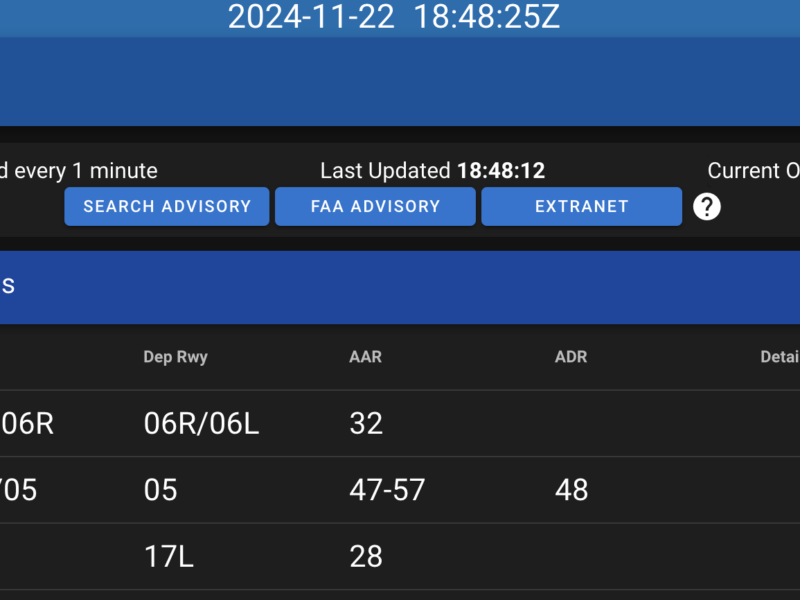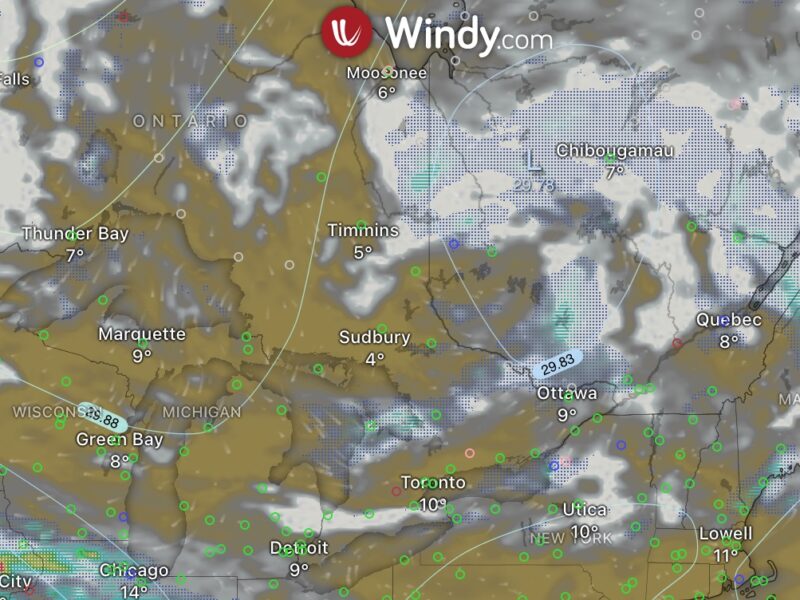Todays lesson involved some more upper air work. Today we headed to the east to the Claremont Training Area.
As previously mentioned, this training area has its own frequency (I’m too lazy to dig up the old blog entry). This frequency is not noted on any charts (VTA or VNC). You have to dig into the special “dangers to aircraft” section of the CFS. You would think in the interest of safety, they would publish this frequency on the VTA at least.
For the record, its 122.9Mhz.
We practiced some slow flight with and without turns. Power on stalls and climbing turning stalls. We also did a descending turning stall. What? How can you stall while you’re in a descent? It’s possible:
Power to idle, and with no more than 10° of bank, start descending (i was aiming for around 500fpm). Keep pulling back on the yoke to reduce airspeed, while continuing the turn. It took just over 1000′ of altitude before I was able to stall the aircraft. In a descending turning stall, which wing would you suspect would stall first? The inner or outer wing (relative to the turn).
We also did a few spins, specifically my FI was teaching me how to enter the spin. This was the first time I was to enter a spin, which is necessary for the CPL test. I was a little nervous, but after the first one, it’s a piece of cake. In a nutshell:
Start stalling the aircraft. When the airspeed drops below 60KIAS or so, full back on the yoke and full rudder in the direction of the spin. Hold the inputs past the incipient stage to continue the spin into at least 1 full rotation. The problem both my instructor and I had was that the aircraft would stop spinning after about 1 rotation. Good for safety, bad for trying to spin the aircraft. In our debriefing we decided it was probably because we didn’t have enough power in during the spin to keep it going.
The first thing you need to do when recovering from a spin is to bring the power to idle. What would happen if you did the opposite, increased the power?
I’m in the process of getting a new PTR for my CPL. I can include all of the flight time since my PPL test towards the necessary time towards my CPL. The only exception is my multi-rating. X-Country, Night Rating, etc.. can all count. Now to transcribe 10 months of flying from my log book into my PTR (with detailed comments)… fun.
On a scale of one to ten, this flight scored a nine on the fun scale. I’m starting to have a whole new appreciation for spins. Now if only the g forces didn’t make me sick :(


Ah spins…
A long time ago they were on the PPL as well and my first was my most memorable moment in an aircraft. I did as you described at 60 snap back and full left rudder (the 172 spins better to the left) but there actually should be a small pause between full yoke and rudder to get a clean stall. Applying rudder briefly changes the airspeed on each wing, the left wing slows and the right speeds up. In my case enough to unstall it. The result was a half snap roll and we were briefly inverted before the nose fell over and we enterred the spin.
But you’re right, a 172 is so stable that all I had to do was just release pressure and the plane almost recovers itself.
They are fun though… :)
Tom.
Interesting… Why would the aircraft spin better in one direction, but not the other?
How much power were you using? That particular day we were around 1500rpm.
I’ve been told it’s easier to spin left than right… of course it’s easier to scare yourself faster if you see the ground first. And yes you need a bit of power, stall the a/c and snap back right before stall, you need that bit of lift or you’re just drop and the a/c will recover itself… then kick the rudder… keep a bit of power until you have full spin, then do your recover. The 172 is hard to put in a spin, but the 152 or katana does it no problem.
I believe it is easier to spin to the left due to the rotation of the propeller (correct me if wrong).. Think of applying the right rudder to compensate for the left roll tendency when you apply power..
You said it’s the frist time you entered into a spin? I thought it is a requirement for the PPL (although not a examinable item).
It is a requirement for the PPL to EXIT (recover) from a spin.. but not to enter one.